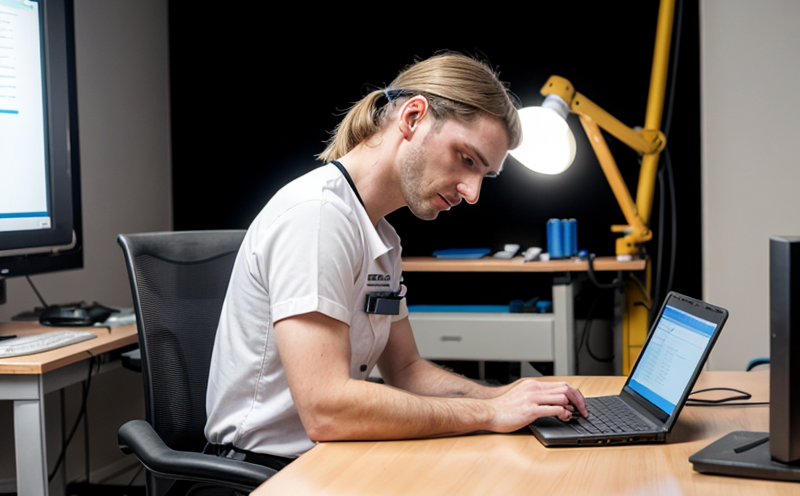EASA AMC 25.1309 Human Error Probability Assessment Testing
The European Aviation Safety Agency’s (EASA) Advisory Material Circular (AMC) 25.1309 focuses on the assessment of human error probability in aerospace and aviation systems. This is a critical aspect of ensuring safety and compliance with international standards, especially given the complexity and high stakes involved in aviation operations.
Human factors play a significant role in aviation accidents, often serving as contributory or even causative agents. AMC 25.1309 mandates that manufacturers and operators assess the potential for human error within their systems to mitigate risks effectively. This process involves identifying, evaluating, and controlling errors that could lead to accidents.
The testing under this regulation typically includes simulations of real-world scenarios where human interaction with aircraft systems is involved. It aims at quantifying the likelihood of human error given specific conditions, such as fatigue, distraction, or miscommunication. The testing methodology involves detailed analysis using tools and techniques like Fault Tree Analysis (FTA), Event Tree Analysis (ETA), and Human Reliability Assessment (HRA).
The service provided encompasses a comprehensive suite of tests designed to meet the requirements set forth by EASA AMC 25.1309. Our team leverages advanced simulation software, real-world data analysis, and expert knowledge in human factors engineering to conduct these assessments accurately.
For instance, our testing involves creating detailed scenarios that mimic actual operational environments where pilots or maintenance personnel might encounter errors. We then analyze how these individuals would respond under stress or unusual conditions. This includes evaluating the effectiveness of training programs, cockpit design, and communication protocols in preventing human error.
The goal is to provide manufacturers with actionable insights that can help improve system safety by reducing potential points of failure introduced by human operators. By addressing these issues proactively, we contribute significantly to enhancing overall aviation safety standards globally.
| Application Area | Description |
|---|---|
| Pilot Training Programs Evaluation | Evaluating the effectiveness of training programs in reducing human error probability during critical phases of flight. |
| Cockpit Design Review | Assessing cockpit design elements that might contribute to or mitigate pilot errors. |
| Communication Protocols Analysis | Evaluating communication protocols used in air traffic control and crew coordination for their potential to cause human error. |
| Maintenance Procedures Audit | Reviewing maintenance procedures for identifying tasks that could lead to operator errors during execution. |
The service we offer ensures compliance with EASA AMC 25.1309 while providing valuable insights into areas needing improvement. By focusing on these aspects, our clients can enhance their product offerings and operational processes, ultimately leading to safer aviation practices worldwide.
- Utilizes advanced simulation software for accurate error probability assessment.
- Employs expert human factors engineers with extensive experience in aviation safety.
- Incorporates real-world data into simulations to ensure realistic scenario representations.
- Provides detailed reports outlining findings and recommendations based on assessments conducted.
Why It Matters
The importance of human error probability assessment cannot be overstated in the context of aviation safety. Aviation is one of the most regulated industries due to its inherent risks, and even minor errors can have catastrophic consequences. By adhering strictly to EASA AMC 25.1309 guidelines, organizations demonstrate their commitment to maintaining high standards of safety and compliance.
Human error assessments help identify vulnerabilities in both procedural and physical systems that could otherwise go unnoticed. These evaluations provide critical data points needed for continuous improvement efforts aimed at enhancing system reliability and reducing accidents caused by human factors.
The benefits extend beyond just regulatory requirements; they also translate into improved efficiency, better resource allocation, and enhanced brand reputation among stakeholders. Organizations that prioritize human error probability assessment demonstrate leadership in fostering a culture of safety within their teams, which ultimately leads to greater trust from customers and partners alike.
Industry Applications
Our human error probability assessment testing services find application across various segments of the aerospace & aviation sector. Here are some key areas where our expertise is particularly relevant:
- Pilot Training Programs Evaluation: Ensuring that pilots receive adequate training to handle critical situations without increasing the risk of errors.
- Cockpit Design Review: Analyzing cockpit interfaces and controls for their impact on pilot performance and error rates.
- Communication Protocols Analysis: Examining communication channels between different teams involved in an aircraft's operation, such as ATC and crew members.
- Maintenance Procedures Audit: Identifying potential hazards associated with maintenance tasks performed by ground staff.
By focusing on these areas, we assist our clients in creating safer environments for everyone involved in aviation operations. Our approach ensures that every aspect contributing to human error is thoroughly examined and addressed proactively.
Environmental and Sustainability Contributions
Incorporating sustainability into aerospace & aviation testing not only enhances safety but also promotes environmentally friendly practices. Here’s how our EASA AMC 25.1309 human error probability assessment contributes:
- Educational Impact: By promoting best practices in training and design, we help reduce the likelihood of errors leading to accidents. Fewer accidents mean fewer incidents requiring emergency landings or other actions that could harm ecosystems.
- Innovation Drive: Our assessments encourage innovation by highlighting where new technologies can be implemented safely without introducing additional risks.
- Operational Efficiency: Improved systems and procedures reduce fuel consumption, emissions, and waste generation during flight operations.
Through these contributions, we strive to make the aviation industry more sustainable while upholding its paramount duty of safety.





